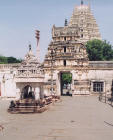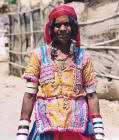Vijayanagar, Hampi, Karnataka, India (site museum)
"I then visit the breathtaking ruins of Vijayanagar in Hampi, Karnataka. Once the capital city of the Vijayanagar Empire (c. 1336–1565), it was famed for its wealth, military prowess and cosmopolitanism. How did it acquire all the riches that foreign travellers gushed about? Was Vijayanagar a self-conscious bastion of Hinduism heroically resisting Islam for centuries, as Hindu nationalists claim? What is its legacy in south India? For such questions and a sense of its rulers, economy, trade, social customs and festivals, I lean on both scholars and visitors like Abdur Razzaq of Persia, Niccolo de Conti of Italy, and Duarte Barbosa, Domingo Paes and Fernao Nuniz of Portugal. Near Hampi, I also meet Krishna Devaraya, eighteen generations apart from his famous namesake and royal ancestor."
—From the Introduction of Namit Arora's Indians: A Brief History of a Civilization, forthcoming from Penguin India.
Designed in collaboration with Vitalect, Inc. All rights reserved. |





























